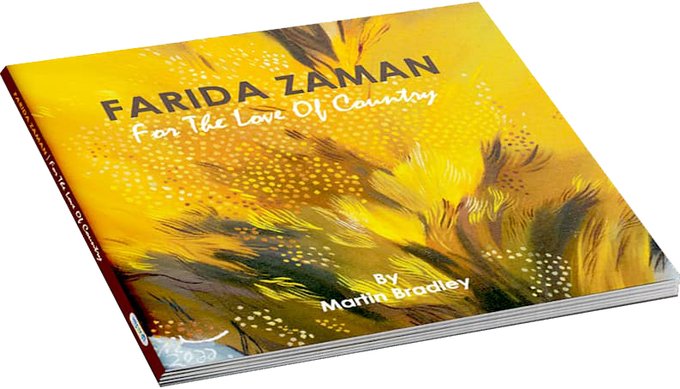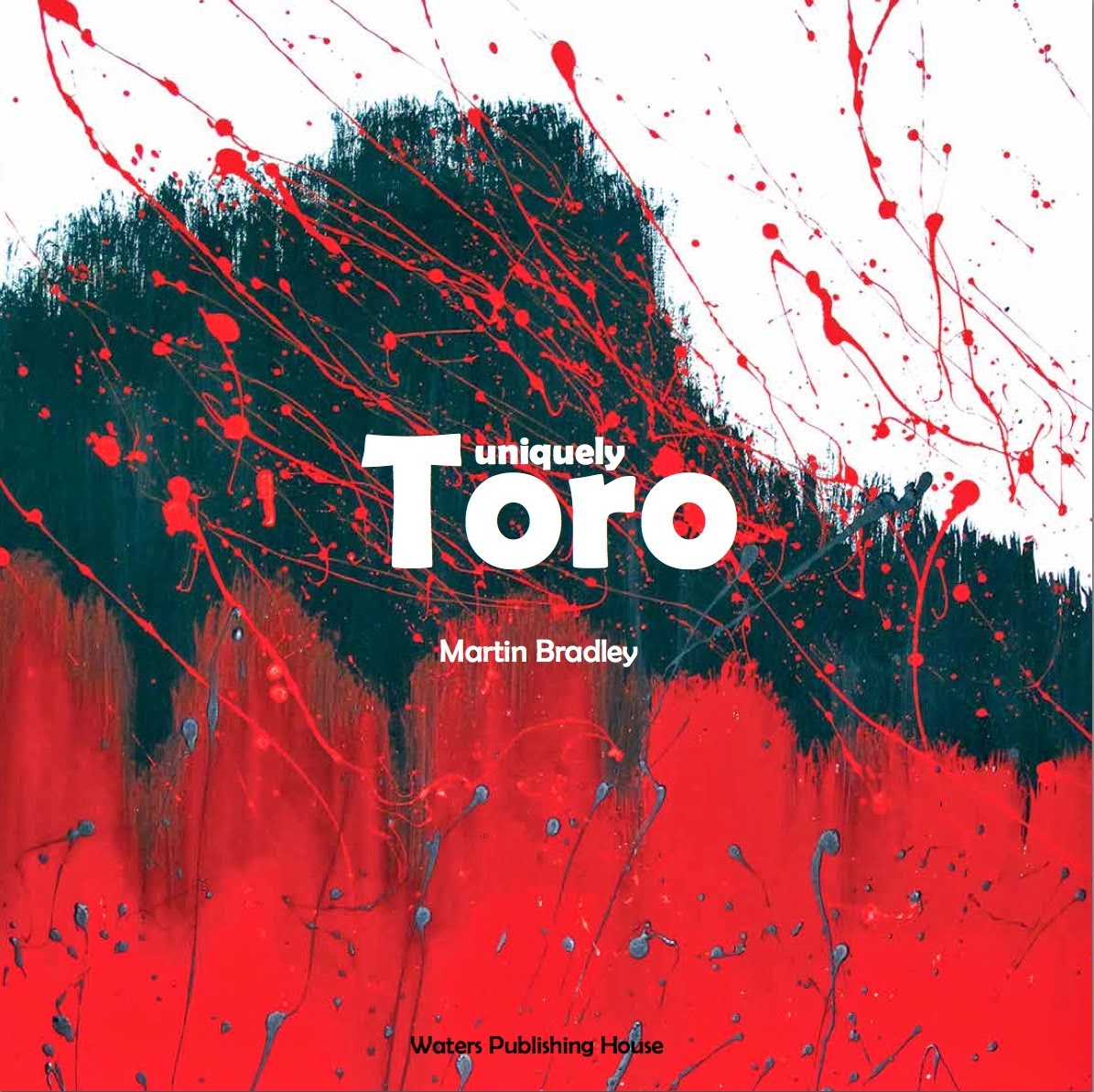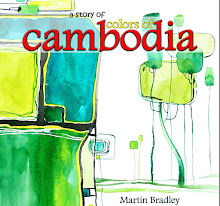Black is not exhibited in so elementary a state as white. We meet with it in the vegetable kingdom in semi-combustion: and charcoal, a substance especially worthy of attention on other accounts, exhibits a black colour. Again if woods - for example, boards, owing to the action of light, air, moisture, are deprived in part of their combustibility, there appears first the grey then the black colour. So again, we can convert even portions of animal substance to charcoal by semi-combustion.
Johann Wolfgang von Goethe, Theory of Colours, 1810.
In Bangladesh’s cooler month of February (2019), I had the great pleasure of meeting the former actress and playwright turned artist, Bipasha Hayat, at her home studio in Dhaka 1212. She is the daughter of actor and film director Abul Hayat, and is married to actor and film director Tauquir Ahmed.
Bipasha Hayat has made an international name for herself as a Bangladesh ‘Conceptual’ artist and has turned her attention to one of the most important areas of human existence – memory. Issues of our humanity, identity, self, ‘I’ and ‘Other’, culture etcetera are reliant upon being remembered. In a series of intriguing works Bipasha Hayat has woven a tangible treatise on memory through the colour black.
“Memory of past episodes provides a sense of personal identity-the sense that I am the same person as someone in the past. … the sense of identity derives from two components, one delivering the content of the memory and the other generating the sense of mineness…. In addition, articulating the components of the sense of identity promises to bear on the extent to which this sense of identity provides evidence of personal identity.”
Memory and the Sense of personal Identity Stanley B. Klein and Shaun Nichols, Mind, Vol. 121, No. 483 (July 2012)
In her series of images comprising the installation ‘Cast My Vote For Socrates' Acquittal’ (2020) Hayat references the Greek philosopher Socrates’ sentence of death in 399 BC (B.C.E.). According to the ancient Greek philosopher Plato (in The Apology), Socrates’ crimes were ‘failing to acknowledge gods worshiped by the city’ and ‘corrupting the young’. In her hand-pressed impressions, printed from chiselled stone and black acrylic paint on 221 pieces of watercolour paper, Hayat brings back to our cultural memory the injustice served on one of the greatest Western philosophers of all times. The number 221 references those who voted for Socrates’ acquittal (220), plus her own vote, against the 280 votes for his demise via the drinking of hemlock. The artwork is her vote against injustice, historical and current. Remembering that initial trial, some two thousand and four hundred years later (2012), a new international panel gathered to re-run Socrates’ trial, in Athens and, ironically, acquitted him of his crimes.
In other works, such as her ‘Memoir’ series (2016), Hayat uses corrugated cardboard painted black and rendered to intimate words, spaces, sentences, even paragraphs. With raised sections initially ‘reading’ as anonymised and coded segments of ‘text’, the viewer observes what once, from a distance, appears as text recodes itself before their eyes into the corrugated board painted black, which it is. The viewer misreads, mis-recalls and mis-projects images from memory, onto the presented artwork. As the visitor’s brain conjures, clinging to the initial notion of text, desperately trying to make meaning where there is none, their thoughts bid for logic, rationality, and auto-realign to thoughts of Braille (the system of raised dots read with fingers by people having low vision, or who are sight less). As the viewer closes on the artwork fresh recollections occur. Perhaps this enigmatic work, though not text in the common visual sense, can be ‘read’ through touch, though touch is not permitted within the viewing space.
The work confounds and puzzles. Memories dragged up are catapulted at the artworks, hoping that one might stick; that the recalled memory might decode the not encoded. It doesn’t of course. The text, which is not text, only hints at some, seemingly unassailable, language.
As intimated by Goethe, charcoal (that which is especially worthy of attention, see above) makes a mark of black colour. Black may be both absence and presence. Black, as text, offers to reveal but as asemic text rescinds that offer in favour of mystery and conundrum. Black can both obscure (as in Hayat’s Memoirs) and reveal. The beauty of faces, of human and animal bodies, of delicate plants, of thought and intention are revealed in the work of artists such as Albrecht Dürer, Édouard Manet, Edgar Degas, and Henri de Toulouse-Lautrec. Or, there again, with Chinese black ink made from a mixture of soot and animal glue, such as in the works by Qi Baishi and his ‘ink wash shrimps’ (1951) or the ‘Famine Sketches’ (1943-1944) of Bangladesh’s Zainul Abedin Mymensingh. While charcoal black, and black ink, may communicate through images and ‘writing’ from the conscious mind, with the intended expedition of acts of communication, there are other ‘texts’ which spring from the subconscious, and which communicate in a less than linear fashion, like the ‘Memoir’ series (above).
The making of marks has been intrinsic to humanity from the first cave dwellers, and their awaiting walls, to the black on white text of the hand phone screen. Since early 800 AD with the advent of Chinese printing and later with the world’s first moveable type in China (11th century) we have entrusted our memories to devices and objects exterior to ourselves. We draw, we report, we send and we display but we also save, hold data in our memories, on our computer hard drives and external hard drives. We back up, save to hard copy, preserve memories in books, essays, files, in boxes, on shelves and in rooms because our memory recall cannot be relied upon unless we have eidetic (photographic) memory, which few have. And that was the prompting behind the first Chinese printing, to promp the oral story tellers. Bipasha Hayat reveals our dependency upon access to memory in her works concerning the use of black and it's innate ability to both reveal and obscure.
While it is generally considered that white reveals and black conceals, when we consider the ‘tabula rasa’, the blank page (probably white) we are considering a background to script, or text or image. If we were to write or type white words onto the white page, we would see little. If, on the other hand, we write or type black words onto that same white page, our thoughts will become revealed.
French Poet and writer Andre Breton was intrigued by the writings of Sigmund Freud and his enquiries into the subconscious mind. Since 1913, Breton engaged in the process of automatic writing and later, with the Dadaists especially with Philippe Soupault, furthered his interest in the notions of automatic (subconscious) writing, or surrealist automatism (occurring in the book Les Champs magnétiques The Magnetic Fields, 1920). Breton mentions that…..
“Psychic automatism in its pure state, by which one proposes to express -- verbally, by means of the written word, or in any other manner -- the actual functioning of thought. Dictated by the thought, in the absence of any control exercised by reason, exempt from any aesthetic or moral concern.”
Later Breton originated the first Surrealist Manifesto (Le Manifeste du Surréalisme, 1924) which outlined his ideas about art and literature concerning the subconscious and the symbolism of dreams. While Breton and others wished to bypass the logical, conscious mind and access the subconscious and its non-filtered thoughts and ideas, they were unaware of one tribal people in India who had no access to literature, but nevertheless produced something the Surrealists would have been amazed by.
The Hill Korwa, living in the Lalarpat and Baladarpat villages in Raigarh District, Madhya Pradesh, India, have no linguistic, written, script. They do, however, produce what has been termed a ‘Magic Script’, that is to say a text-like calligraphy which is not born from language but is ‘painted’ as ‘magical messages’ (J. Swaminathan) by these illiterate tribes people.
This Korwa ‘Magic Script’ resembles the concept of asemic writing, generally seen as writing which is a wordless, open, semantic form of writing, and having no specific semantic content. Asemic writing (or script) creates tension. It ‘talks’ about the confusion between the thing seen and the thing it is pointing to, as per Belgium Surreal artist René Magritte and his ‘The Treachery of Images’ (1929) proclaiming that a painting of a pipe is not a pipe (Ceci n'est pas une pipe). This is the area of interest for the practitioners of asemics, in assisting the ‘reader’ to focus on the actual work, its marks and its swirls and to study them for what they are, not for the ‘words’ and their meaning being represented.
Asemic calligraphy arranged across draped black muslin in Hayat’s ‘Shadow of Memories’ are reminiscent of Dada and the Surrealist notion of ’Psychic Automatism’. Images rendered onto the draped muslin resemble text, just as the cardboard indentations did in Hayat’s ‘Memoir’ series. Once again the viewer is challenged by the appearance of text that is not text, but the appearance of text. Again the mind wishes to decipher and asks ‘is this the text of another language?’
In Byzantine and Renaissance paintings in the 14th and 15th centuries, there occurred design motifs in certain religious paintings which mimicked, but were not, ‘Eastern’ script. This faux script is known as ‘Pseudo-Kufic’ or Kufesque script. It frequently resembles arabesque styles of lettering, and is painted as embroidered decoration on the hems of garments or edges of carpets in wonderfully detailed paintings. The word ‘Kufic’ explains an early angular form of the Arabic alphabet, found chiefly in decorative inscriptions. The above mentioned scripts had the appearance of, but was not, Arabic. They were representations without textual meaning, and were used for decorative purposes and frequently presenting an "oriental" atmosphere to paintings with regard to individuals or, in particular, Holyland scenes.
Hayat’s ‘Shadow of Memories’ ‘script’ is hand rendered. To all intents and purposes is ‘in the wind’. The installation’s black muslin has the possibility of a fluidity of movement of, essentially, throwing its ‘text’ to the wind, making it tentative, possible, but uncertain just as the script itself appears laden with possibilities, but remains an enigma and undecipherable. Those works of Bipasha Hayat are the antithesis of the idea of Tibetan prayer flags, which traditionally are hung in high places to catch the wind so that the Buddhist prayer is carried to bless all sentient beings. Hayat’s works proffer but rescind.
In Hayat’s ‘Shadow of Memories’ there is also the sensation that we might be looking at the darkness of memory loss, through degenerative diseases like Alzheimer's, where working memory and long term memory are affected early and where sufferers encounter difficulties in the retelling and reading of texts. In a sense, we the observer of Hayat’s black asemic scripts are forced into the role of the recipient of a degenerative brain disorder. There is much (deliberately) ‘lost in translation’. Much we cannot quite grasp. We become thrown onto the images that are not words, like films in languages which we do not understand, sans subtitles to guide our otherwise active mind (s) through the complex plot twists. There again, we are faced with something resembling the fascinating non-textual, but illustrative, ‘magic scripts’ of the Korwa. Yet Hayat’s work does not use her asemic imagery as an exotic decoration like the pseudo-kulfic script, but more like an offering akin to the Korwa’s ‘magic scripts, and with her works we, her audience, are forced to accept that there may be meanings other than those we can effectively grasp as she intrigues and teases her audience with hints.












